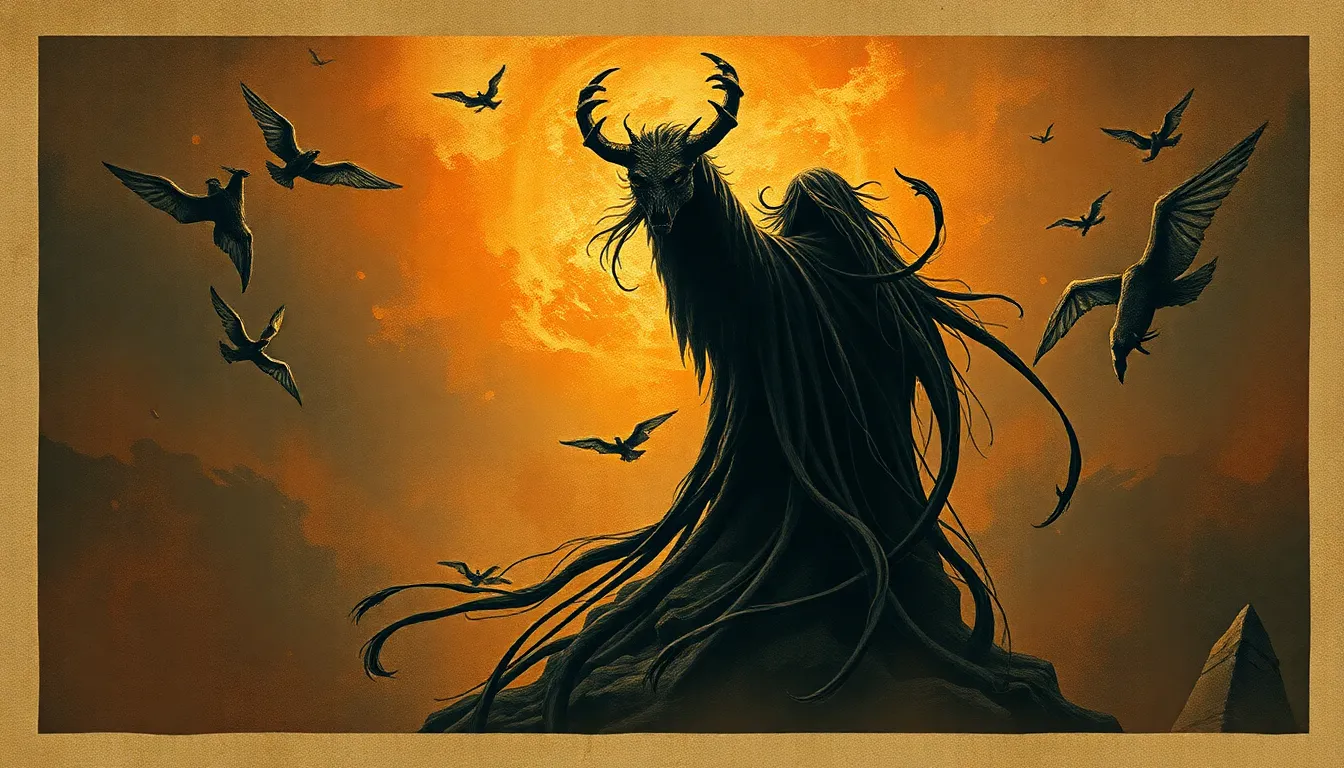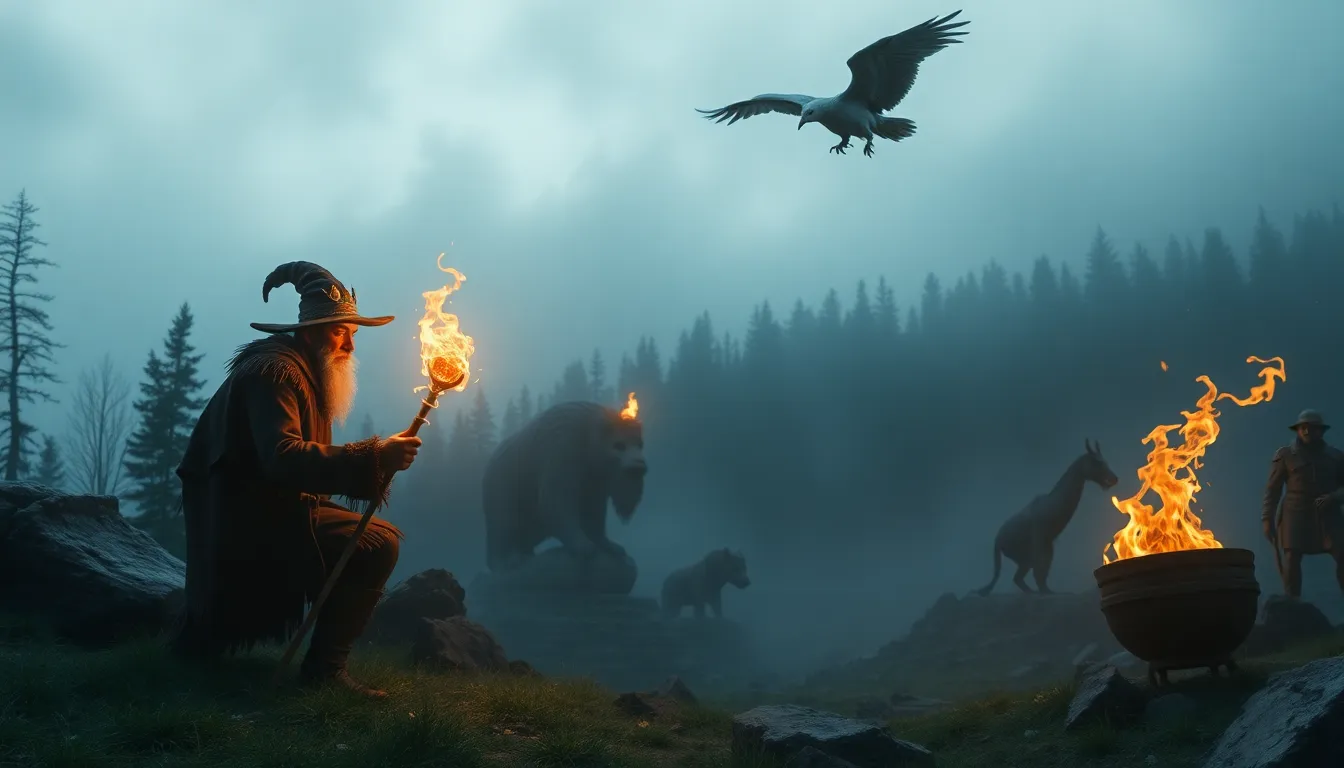The Aztec Pantheon: A Realm of Love and Loss
Aztec mythology, a treasure trove of ancient tales, is deeply intertwined with themes of love and tragedy. The Aztec people, who flourished in Mesoamerica from the 14th to the 16th centuries, believed in a vast and complex pantheon of gods and goddesses who shaped their lives and destinies. This pantheon reflected the complexities of human emotions, encompassing the joys of love, the pains of loss, and the sacrifices made in the name of these powerful deities.
The Aztec worldview was infused with a profound understanding of duality; the idea that life and death, joy and sorrow, are inextricably linked. This concept finds its expression in many of their myths, where love often leads to tragic outcomes, and sacrifice becomes a way to honor the gods and maintain cosmic balance.
Huitzilopochtli and the Birth of the Sun: A Story of Sacrifice and Divine Love
In the heart of Aztec mythology lies the powerful tale of Huitzilopochtli, the god of war and the sun. This myth carries profound implications for understanding Aztec beliefs about love, sacrifice, and the very origins of the cosmos. Huitzilopochtli's birth was a dramatic event, marked by conflict and bloodshed. His mother, Coatlicue, the earth goddess, was impregnated by a ball of feathers, a symbolic representation of the divine. This union was challenged by the other children of Coatlicue, born from her earlier union with the moon, who sought to kill Huitzilopochtli in his cradle. His sister, Coyolxauhqui, led the attack, but Huitzilopochtli emerged victorious, slaying his siblings and becoming the sun god.
This myth conveys the idea that love and sacrifice, intertwined from the beginning, are essential to life itself. Huitzilopochtli's victory over his siblings parallels the triumph of the sun over the darkness of night, a victory that requires sacrifice and bloodshed. The myth also speaks to the intricate relationships between gods and goddesses, highlighting the interconnectedness of the divine realm, where love and conflict are eternally intertwined.
Xochiquetzal: The Goddess of Love, Beauty, and Fertility
Xochiquetzal, the goddess of love, beauty, and fertility, is one of the most beloved figures in Aztec mythology. Her name, derived from the Nahuatl words “xochitl” (flower) and “quetzal” (a bird known for its beautiful plumage), reflects her association with nature's abundance and the radiant beauty of the human spirit. Xochiquetzal embodies the joyous aspects of love, celebrating passion, sensuality, and the creative power of life. She is often depicted adorned with flowers and precious jewels, reflecting the richness and splendor associated with her domain. Her role extends beyond personal love, encompassing the fertility of the earth, the abundance of crops, and the prosperity of communities.
Xochiquetzal's influence can be seen in Aztec art, where she is often depicted in scenes of courtship, marriage, and childbirth. Her presence is invoked in rituals designed to promote love, fertility, and harmony within families and communities.
Mayahuel: The Goddess of Maguey and the Tragic Love of the Gods
The story of Mayahuel, the goddess of the maguey plant (from which the intoxicating beverage pulque was made), is a tale of love, loss, and the consequences of divine passion. Mayahuel was a beautiful goddess, known for her generosity and the abundance she brought forth from the maguey plant. She was also known for her love affair with the god of fire, Xolotl, a love that was forbidden by the gods and condemned as a transgression against the natural order.
In an act of defiance, Mayahuel and Xolotl fled together, seeking refuge and happiness. However, the gods were not pleased by their disobedience. They punished Mayahuel, transforming her into a maguey plant, and severing Xolotl from his divine form. This story serves as a cautionary tale, highlighting the dangers of unchecked passion and the consequences of defying the established order.
The Story of Xochipilli: A Prince of Flowers and the Dance of Love
Xochipilli, the prince of flowers, embodies the playful and sensual aspects of love. His name, derived from “xochitl” (flower) and “pilli” (prince), reflects his association with the beauty and joy of nature. Xochipilli is often depicted adorned with flowers and feathers, participating in festive dances and celebrating the abundance of life. He is patron of games, music, and dance, activities that underscore the joyful aspects of love and the importance of celebrating life's pleasures.
Xochipilli's story is less about a single love affair and more about the celebration of love in all its diverse forms. He is associated with the arts, beauty, and the pursuit of pleasure, representing the power of love to bring joy and excitement to life.
The Legend of Tenochtitlan: Love and Loss in the Foundation of a Civilization
The foundation of Tenochtitlan, the capital city of the Aztec Empire, is woven into a tale of love, sacrifice, and the enduring spirit of a people. The legend tells of the journey of the Aztecs, led by their god Huitzilopochtli, in search of a promised land. After years of wandering, they reached a desolate island in the middle of Lake Texcoco, a place that seemed inhospitable and barren.
However, the god Huitzilopochtli appeared to his people, promising them a glorious future and a magnificent city. He instructed them to build their city on the spot where they had found an eagle perched on a cactus, devouring a serpent. This symbolic vision, later depicted on the Aztec flag, represented the conquest of evil and the promise of a new beginning.
The arduous task of constructing a city on the island required immense effort and sacrifice. The Aztecs faced many challenges, struggling against the harsh environment and the hostility of other tribes. Yet, they persevered, driven by their love for their god and their belief in a brighter future. Their love for their city and their devotion to Huitzilopochtli fueled their tenacity and determination, paving the way for the creation of one of the most powerful and sophisticated civilizations in Mesoamerica.
The Role of Sacrifice in Aztec Mythology: Love Offered as Tribute
In Aztec mythology, sacrifice played a central role, not simply as a brutal ritual, but as a profound expression of love for the gods and a way to ensure the continued existence of the universe. The Aztecs believed that the sun god Huitzilopochtli needed to feed on human hearts to maintain his strength and continue his daily journey across the sky.
This belief led to the practice of human sacrifice, a ritual that was deeply spiritual and emotionally charged for the Aztecs. While it is important to acknowledge the brutality of this practice, it’s essential to understand its deeper meaning within the context of Aztec culture. Sacrifice was not viewed as a punishment, but as a way to honor the gods and ensure the continuation of life.
The Aztec people believed that by offering their most precious possession – their life – they were demonstrating their love and devotion to the gods. Sacrifice was a way to express gratitude for the blessings they received and a way to ensure the favor of the gods.
Theories on the Origins of Aztec Mythology: Influences from Earlier Cultures
Aztec mythology, like all mythology, is a tapestry woven from diverse threads of influence, shaped by the cultural interactions and historical experiences of the people. The origins of Aztec mythology can be traced back to earlier Mesoamerican cultures, including the Toltecs and the Olmecs. These earlier civilizations left behind a legacy of rich mythology, religious practices, and artistic traditions that influenced the development of Aztec beliefs.
The Toltecs, particularly, played a significant role in shaping Aztec mythology. Their stories of gods, goddesses, and heroes found their way into Aztec narratives, often with modifications and adaptations that reflect the unique cultural context of the Aztec people. The Olmecs, known for their sophisticated civilization and artistic prowess, also left a lasting impression on Aztec mythology. Their reverence for the jaguar, their creation myths, and their religious symbolism found echoes in Aztec beliefs and practices.
The Impact of Aztec Mythology on Modern Culture: Persistence of Love and Tragedy
The enduring power of Aztec mythology lies in its ability to resonate with our own human experiences, reminding us of the universal themes of love, loss, sacrifice, and the search for meaning in life. Even today, Aztec myths continue to inspire artists, writers, and musicians, influencing the creative narratives of our time.
The stories of the Aztec gods and goddesses, their love affairs, their battles, and their sacrifices, continue to be retold and reinterpreted, offering insights into human nature and the complexities of the human experience. The themes of love and tragedy, so deeply embedded in Aztec mythology, continue to hold relevance for us, reminding us of the enduring human capacity for both great love and profound sorrow.
The Aztec Concept of the Afterlife: Finding Love and Peace in the Next World
The Aztecs believed in a complex afterlife, where the fate of the deceased was determined by the manner of their death. Warriors who died in battle, mothers who died in childbirth, and those who died as sacrifices were believed to reach the paradise of Tlalocan, ruled by the god Tlaloc. This paradise was a place of beauty and abundance, where the faithful enjoyed eternal bliss.
Other souls, however, were faced with a different fate. Those who died of illness or old age were believed to enter the underworld, Mictlan, a realm ruled by the goddess Mictecacihuatl. Mictlan was a challenging place, where souls had to journey through nine levels of trials and tribulations before reaching their final destination.
Despite the grimness of the underworld, the Aztecs believed that even in the afterlife, love and family ties could endure. Souls could reunite with their loved ones, and the warmth of family and community could provide solace in the face of death. This belief in the persistence of love and the possibility of finding peace and connection in the next world provided comfort and meaning to the Aztecs in the face of life’s inevitable challenges.
FAQ
Q: What were the main gods and goddesses in Aztec mythology?
A: Some of the most prominent gods in Aztec mythology include Huitzilopochtli (god of war and the sun), Tezcatlipoca (god of night and magic), Quetzalcoatl (god of wind, learning, and culture), Tlaloc (god of rain and water), and Xolotl (god of lightning and twins). The most revered goddesses include Coatlicue (earth goddess), Coyolxauhqui (moon goddess), Xochiquetzal (goddess of love, beauty, and fertility), and Mayahuel (goddess of maguey and pulque).
Q: What is the significance of sacrifice in Aztec mythology?
A: Sacrifice was a fundamental aspect of Aztec religion, viewed as a way to honor the gods and ensure the continuation of life. The Aztecs believed that by offering their most precious possession – their life – they were demonstrating their love and devotion to the gods.
Q: What is the role of love in Aztec mythology?
A: Love is a prominent theme in Aztec mythology, often depicted as a powerful force that can inspire both great joy and profound tragedy. Love between gods and goddesses, love between mortal beings, love for the gods, and love for one’s community all play significant roles in these stories.
Q: How does Aztec mythology reflect the complexity of human emotions?
A: Aztec mythology offers a rich tapestry of human emotions, encompassing the joys of love, the pains of loss, the struggles of war, the search for meaning, and the desire for connection. These stories reflect the full spectrum of the human experience, reminding us of the depth and complexity of our own humanity.



